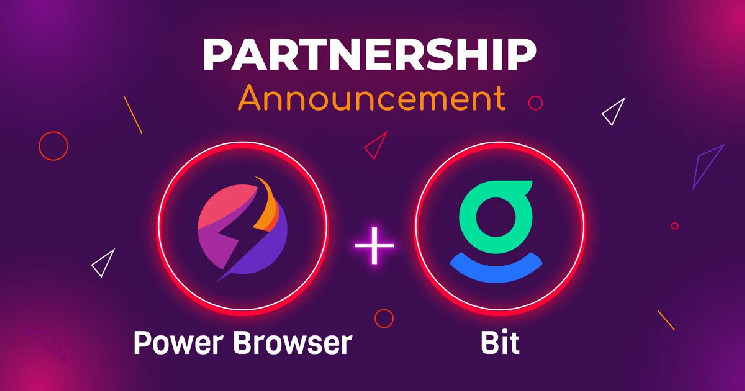Blockchain
In a recent blog post, Power Browser and .bit announced a strategic partnership that promises to revolutionize the Web3 landscape. This collaboration aims to harness the power of decentralized identity, a concept that is rapidly gaining popularity in the digital world, to improve users’ privacy, security and control over personal data.
Power Browser and .bit: Breakthrough Decentralized Identity in Web3
As the world of Web3 continues to evolve at a rapid pace, the partnership between Power Browser and .bit stands out as a beacon of progress in digital identity transformation. United by a common goal of empowering individuals and communities in this new Internet age, this alliance will transform our understanding and management of online identities.
The joint efforts of Power Browser and .bit are poised to facilitate the widespread adoption and practical use of decentralized unified identity solutions within the Web3 ecosystem. Here’s how this partnership aims to benefit the Web3 community:
- Unified decentralized identity: The alliance promotes the creation of a unified decentralized identity system, giving individuals and communities within Web3 greater control over their digital personas. This results in increased privacy, security and ownership of personal data for users.
- Inter-Blockchain functionality: By leveraging the capabilities of .bit, Power Browser can enable inter-blockchain functionality, enabling smooth interaction and integration with multiple blockchains such as Ethereum, BNB Chain, Polygon, and Tron. This functionality broadens the scope and accessibility of Web3 services.
- Extensive Wallet and DApp compatibility:.bit is supported by over 100 mainstream wallets and DApps, a benefit that can be passed on to Power Browser users. This compatibility allows for seamless interaction with a range of services, allowing users to effortlessly use decentralized applications and manage their digital assets.
Decentralized Identity, or “DID,” is a new approach to identity verification that shifts control from centralized authorities to individual users. In the traditional Web2 model, users’ identities are managed by centralized entities such as social media platforms or email providers. These entities store personal data on their servers, making them an attractive target for hackers and raising concerns about privacy and data misuse.
Power Browser to provide custom domain ownership
Power Browser, a leading name in the world of secure and private web browsing, and .bit, a pioneer in decentralized domain systems, are perfectly poised to drive DID transformation. Their partnership represents an important step forward in the development of Web3 technologies.
Power Browser takes a big step forward and has integrated .bit domains, giving users direct access to decentralized websites and applications. This integration paves the way for users to smoothly navigate the vast landscape of the web3 ecosystem. By including .bit domains, Power Browser makes it easier for users to traverse the decentralized web and take full advantage of blockchain technology.
In an effort to further empower users in the Web3 ecosystem, Power Browser offers ownership of custom domains, such as PowerBrowser.bit. This feature allows users to develop a unique online identity, customize their websites, and actively participate in decentralized communities.
In addition, to improve the user experience, Power Browser and .bit have combined their marketing efforts to increase their reach and interact more effectively with the community. This collaboration is a testament to their commitment to providing individuals with decentralized unified identity solutions. Together, Power Browser and .bit will redefine the future of the Internet and give users more privacy, security and control over their digital identity.
The partnership also has wider implications for the Web3 ecosystem. By demonstrating the practical applications of decentralized identity, Power Browser and .bit could inspire other technology companies to adopt similar technologies, accelerating the transition to Web3.

